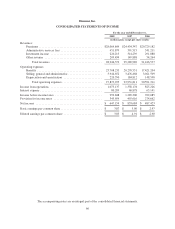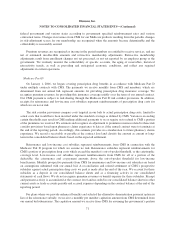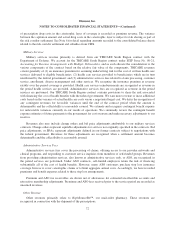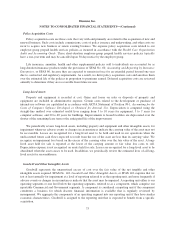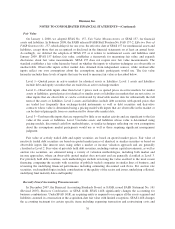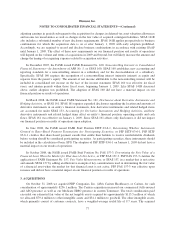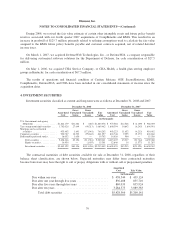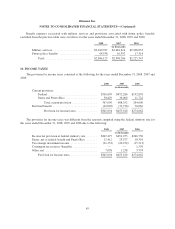Humana 2008 Annual Report Download - page 86
Download and view the complete annual report
Please find page 86 of the 2008 Humana annual report below. You can navigate through the pages in the report by either clicking on the pages listed below, or by using the keyword search tool below to find specific information within the annual report.Humana Inc.
NOTES TO CONSOLIDATED FINANCIAL STATEMENTS—(Continued)
Fair Value
On January 1, 2008, we adopted SFAS No. 157, Fair Value Measurements, or SFAS 157, for financial
assets and liabilities. In February 2008, the FASB released FASB Staff Position No. FAS 157-2, Effective Date of
FASB Statement No. 157, which delayed, for one year, the effective date of SFAS 157 for nonfinancial assets and
liabilities, except those that are recognized or disclosed in the financial statements on at least an annual basis.
Accordingly, we deferred the adoption of SFAS 157 as it relates to nonfinancial assets and liabilities until
January 2009. SFAS 157 defines fair value, establishes a framework for measuring fair value, and expands
disclosures about fair value measurements. SFAS 157 does not require new fair value measurements. The
standard establishes a fair value hierarchy based on whether the inputs to valuation techniques are observable or
unobservable. Observable inputs reflect market data obtained from independent sources, while unobservable
inputs reflect our own assumptions about the assumptions market participants would use. The fair value
hierarchy includes three levels of inputs that may be used to measure fair value as described below.
Level 1—Quoted prices in active markets for identical assets or liabilities. Level 1 assets and liabilities
include debt and equity securities that are traded in an active exchange market.
Level 2—Observable inputs other than Level 1 prices such as quoted prices in active markets for similar
assets or liabilities; quoted prices for identical or similar assets or liabilities in markets that are not active; or
other inputs that are observable or can be corroborated by observable market data for substantially the full
term of the assets or liabilities. Level 2 assets and liabilities include debt securities with quoted prices that
are traded less frequently than exchange-traded instruments as well as debt securities and derivative
contracts whose value is determined using a pricing model with inputs that are observable in the market or
can be derived principally from or corroborated by observable market data.
Level 3—Unobservable inputs that are supported by little or no market activity and are significant to the fair
value of the assets or liabilities. Level 3 includes assets and liabilities whose value is determined using
pricing models, discounted cash flow methodologies, or similar techniques reflecting our own assumptions
about the assumptions market participants would use as well as those requiring significant management
judgment.
Fair value of actively traded debt and equity securities are based on quoted market prices. Fair value of
inactively traded debt securities are based on quoted market prices of identical or similar securities or based on
observable inputs like interest rates using either a market or income valuation approach and are generally
classified as Level 2. Fair value of privately held debt securities, including venture capital investments, as well as
auction rate securities, are estimated using a variety of valuation methodologies, including both market and
income approaches, where an observable quoted market does not exist and are generally classified as Level 3.
For privately held debt securities, such methodologies include reviewing the value ascribed to the most recent
financing, comparing the security with securities of publicly traded companies in similar lines of business, and
reviewing the underlying financial performance including estimating discounted cash flows. For auction rate
securities, such methodologies include consideration of the quality of the sector and issuer, underlying collateral,
underlying final maturity dates and liquidity.
Recently Issued Accounting Pronouncements
In December 2007, the Financial Accounting Standards Board, or FASB, issued FASB Statement No. 141
(Revised 2007), Business Combination, or SFAS 141R. SFAS 141R significantly changes the accounting for
business combinations. Under SFAS 141R, an acquiring entity is required to recognize all the assets acquired and
liabilities assumed in a transaction at the acquisition-date fair value with limited exceptions. SFAS 141R changes
the accounting treatment for certain specific items including expensing transaction and restructuring costs and
76


